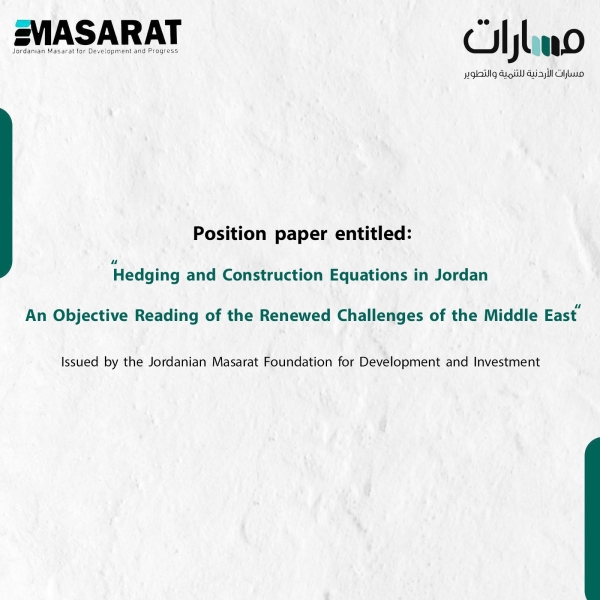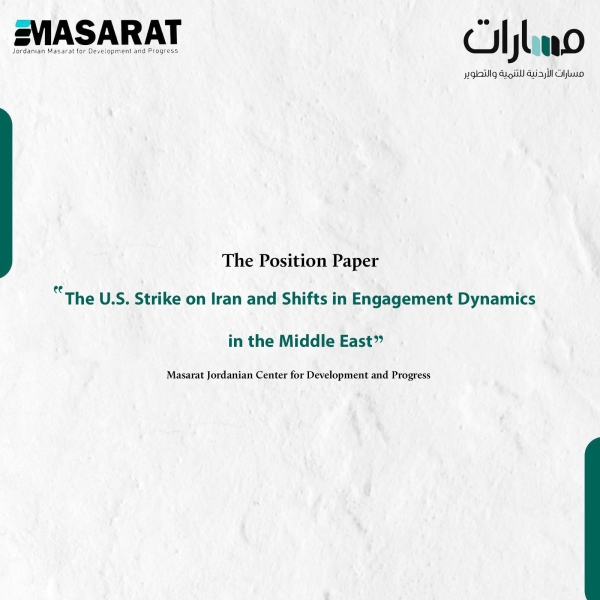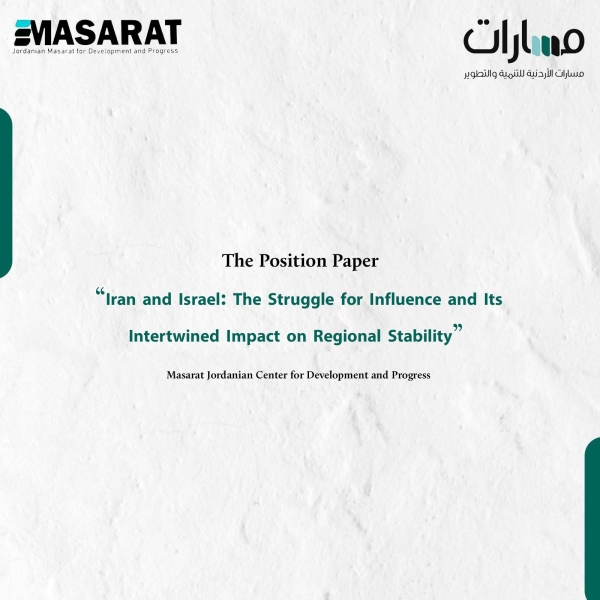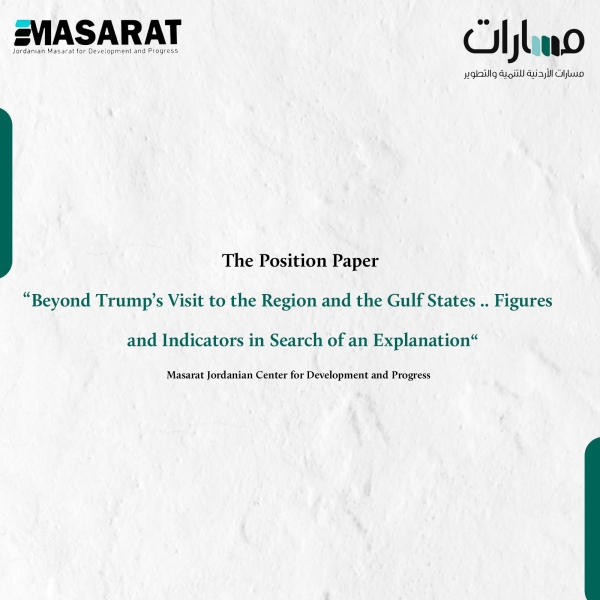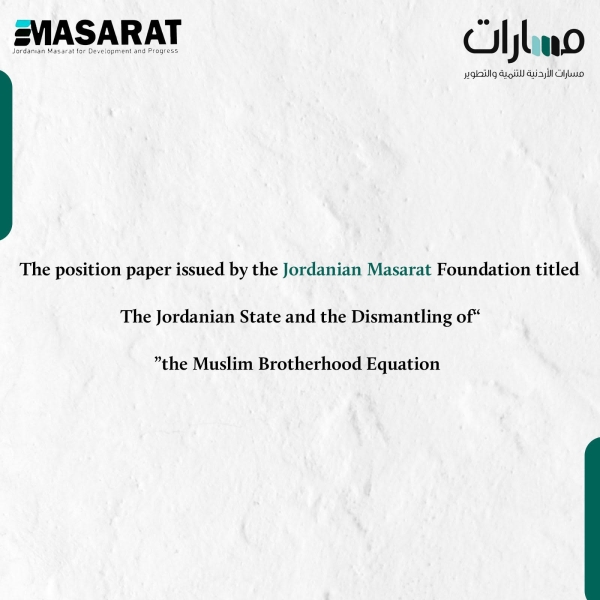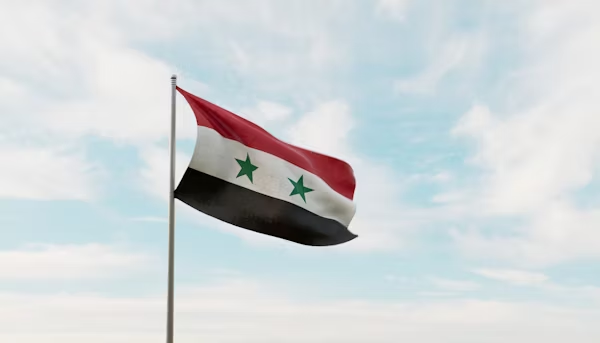Repercussions of the Conflict: The Economic Impacts of the Iran–Israel War on Jordan
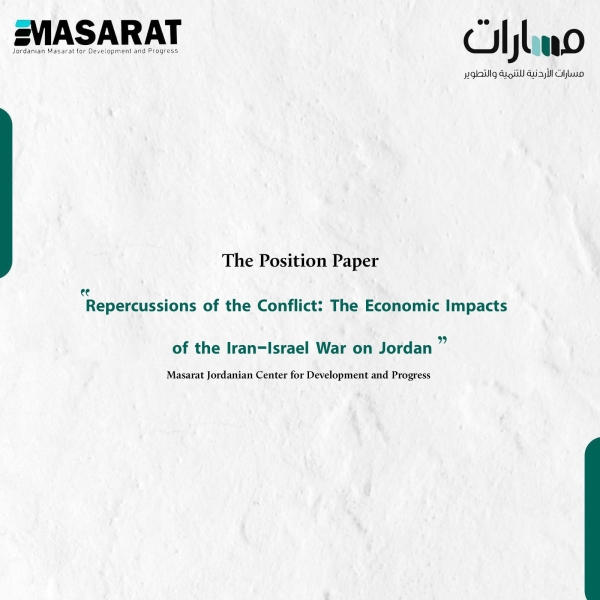
Introduction
The region is entering a transitional phase that is reshaping the rules of market engagement, redefining the concepts of “trade access” and “economic sovereignty,” and placing small, open economies—such as Jordan’s—at a critical crossroads that go far beyond short-term crisis impacts. The Iran–Israel war, with its disruptions to supply chains, energy corridors, and regional shipping, has exposed not just a temporary emergency but a structural vulnerability in Jordan’s economic foundation. It also highlighted the absence of a comprehensive macroeconomic resilience strategy, with responses largely limited to fragmented sectoral actions.
This context cannot be separated from the global trend of economic nationalism that has dominated since 2016, when U.S. President Donald Trump introduced a strict protectionist trade policy. This ushered in a new global trade dynamic based on selective tariffs, renegotiated free trade agreements, and invoking national security as a rationale to restrict certain sectors. These developments have had both direct and indirect implications for Jordan, despite the advantages of the bilateral Free Trade Agreement with the U.S. Jordan’s competitiveness in American markets has been undermined in favor of “America First” industrial policies, particularly in sectors like garments and chemicals, which constitute over 50% of Jordan’s exports.
This paper explores the multi-layered economic repercussions on Jordan—from falling tourism demand and disrupted food import flows to energy security fragility and the reliance of Jordanian industries on imported inputs via vulnerable corridors like the Strait of Hormuz and Bab al-Mandab. These impacts feed directly into Jordan’s macroeconomic indicators, where the government faces mounting pressure to stabilize the balance of payments, curb imported inflation, and achieve growth rates above 2.5%, amid chronic unemployment exceeding 22% and public debt hovering around 114% of GDP. These constraints limit the government's ability to implement expansionary fiscal policies or stimulate domestic demand through conventional tools.
Therefore, this paper repositions the discussion within a sovereign macroeconomic framework, asking a central question:
How can Jordan build macroeconomic readiness capable of absorbing external shocks without depleting foreign reserves, threatening financial stability, or eroding investor confidence?
The paper addresses this by deconstructing the effects of the war and connecting them to the broader global economic balance, presenting policy recommendations to shift Jordan from a reactive, crisis-dependent economy to a strategically proactive one.
Chapter I: The Fragile Structure of Jordan’s Tourism Sector Amid Regional Turmoil and Lack of Sustainable Strategies
The Iran–Israel war has triggered both direct and indirect repercussions for Jordan’s tourism sector, one of the economy’s most geopolitically sensitive sectors. Tourism is highly reactive to regional instability, making it the first sector to suffer during crises and the last to recover.
In Jordan’s case, the crisis revealed deep-rooted vulnerabilities, most notably the fragile marketing structure, which failed to counter the surge in travel cancellations during peak seasons. This points to an unresolved perceptual gap in how global markets view Jordan amid regional volatility.
Although Jordan is among the most stable and secure countries in the Middle East, this reputation has not translated into a strategic marketing narrative positioning the Kingdom as a “safe tourism haven in a turbulent region.” The reactive nature of promotional campaigns has prevented the creation of a counter-narrative that mentally separates Jordan from its volatile surroundings.
Additionally, the crisis exposed Jordan’s limited market diversification, as Western markets—more sensitive to geopolitical unrest—continue to dominate. Untapped opportunities in China and Central Asia have not been effectively explored, amplifying the impact of the war on the sector.
The absence of institutional coordination in crisis response was evident. Embassies and the Jordan Tourism Board failed to issue organized reassurance messages or capitalize on modern tools like FAM trips, influencer marketing, or peer-to-peer (C2C) campaigns. There was also minimal use of AI tools to track market trends or adjust targeting strategies.
Moreover, the lack of a diplomatic media strategy allowed Jordan to be wrongly associated with regional conflict due to proximity rather than actual involvement. This underscores the need for a unified global narrative that highlights Jordan’s national security, stability, and strategic location.
The economic impacts went beyond a decline in tourist inflows, affecting current and planned investments and stalling potential agreements. This calls for a pre-emptive investment protection strategy rather than post-crisis damage control.
Finally, a structural data gap persists. Current methodologies for calculating tourism’s GDP contribution (14–16%) are distorted by including transit and short-stay visitors. Without redefining indicators and measuring qualitative impact, policymaking and impact assessment remain flawed.
Thus, addressing the tourism repercussions of this war requires not just temporary fixes, but a structural overhaul—redefining marketing tools, broadening market reach, and projecting Jordan as an island of safety, not a neighbor of danger.
Chapter II: Jordan’s Food Security in Crisis—Readiness of the Private Sector and Supply Chain Strategy
The Iran–Israel war has reignited concerns about Jordan’s food security amid rising fears of disrupted supply chains. It raises fundamental questions about Jordan’s preparedness to handle sudden shocks in essential goods flow within a tense regional and transboundary logistical environment.
The current emergency underscores the importance of the private sector, which has been central to food supply since the 1998 “tuna crisis,” when Jordan began transitioning food import responsibility—even for strategic goods like wheat—to the private sector.
Jordan’s food system has shown resilience, thanks to diversified sourcing strategies, broad supplier networks, and openness to new markets, enabling consistent supply and avoiding severe bottlenecks—even during geopolitical escalations.
Amid actual threats to global shipping routes, notably the Bab al-Mandab Strait (through which 65% of goods enter Jordan), Jordan successfully opened alternative routes and cleared goods stranded in key ports like Jebel Ali—showcasing operational readiness and crisis de-escalation capacity.
However, the crisis also revealed gaps in media governance and information dissemination, as contradictory official statements inflated public anxiety, despite stable supply-demand indicators.
A unified national reference for food-related information is urgently needed, offering accurate real-time updates and coherent digital messaging to build public trust and prevent psychological fragility during crises.
Jordan’s food security system has proven resilient, but sustaining that resilience requires a more mature institutional framework that aligns the private and public sectors and bridges field operations with public communication. Market stability must no longer rely solely on the private sector but be supported by governance mechanisms that manage public expectations and reinforce internal stability.
Chapter III: Jordanian Airspace—A Strategic Lifeline in a Constrained Geographical Environment
Air connectivity is a key indicator of a country’s integration into the global economy, serving as a silent measure of its trade, tourism, and human mobility networks. The aviation sector contributes 58% of global tourism traffic, over 86 million jobs, and approximately $4.1 trillion to global GDP. Air cargo represents 33% of global trade value, especially in time-sensitive, high-value goods.
For Jordan, airspace is a critical sovereign asset due to its strategic yet geographically constrained location, with limited maritime access and unstable land borders. In this context, airspace emerges as Jordan’s primary channel to the world—economically, diplomatically, and commercially.
The recent Iran–Israel war demonstrated how regional unrest can instantly reshape aviation maps. Despite challenges, Jordan’s aviation sector showed high resilience, building on COVID-era experience. Passenger numbers grew by 9% in the first five months of 2025 despite ongoing regional tensions.
The crisis highlighted the absence of a robust “national airline” capable of acting during foreign airline disruptions. Jordan’s total reliance on external carriers raises concerns about “air sovereignty.” A flexible, non-monopolistic national carrier is needed for emergencies without distorting market competition.
A strategic repositioning of Jordan’s civil aviation sector demands a shift from operational to strategic thinking—seeing airspace as a national resource akin to food security and energy, essential to national stability.
Protecting this resource requires flexible international partnerships, diversified flight routes, and early-warning systems, ensuring Jordan’s aerial connectivity amid its closed land and sea geography.
Chapter IV: Industrial Resilience in Times of Complex Crises
Jordan’s industrial sector faces a long-standing dilemma: weak international integration and dependence on politically volatile shipping corridors. The Iran–Israel war’s indirect effects go beyond supply disruption—they strike at the core of Jordan’s economic sovereignty, questioning the industrial model and overdue reform priorities.
Successive crises—COVID-19, the Ukraine war, Israeli aggression on Gaza, and current maritime threats—reveal that Jordan’s economy, especially its industry, functions under constant geopolitical stress.
These crises fall into two categories:
Total disruptions (e.g., pandemic lockdowns)
Restrained crises that maintain trade flows but inject uncertainty (e.g., current maritime threats)
In this environment, operational sustainability has become synonymous with industrial security, particularly in critical sectors like food, pharmaceuticals, and energy. Jordan meets 65% of its food and 60% of its medical needs locally, but heavy reliance on imported production inputs leaves it exposed to international shocks.
Institutional analysis reveals:
Regulatory inconsistencies hindering local input manufacturing
Policy bias favoring imports over domestic products
Delayed energy reforms, despite over 65% dependence on conventional fuels in industry, and underuse of local resources like the Risha gas field
Roughly 20% of Jordan’s exports pass through geopolitically sensitive maritime routes, revealing strategic failures in market diversification. New trade policies must expand partnerships and target less politically volatile markets.
The war should be viewed as a transformative moment for Jordanian industry—not just a risk, but a chance to:
Transition to secure energy sources
Unshackle industrial inputs from regulatory burdens
Build a geopolitically resilient export map
Chapter V: Jordan’s Energy Sector Between Structural Progress and Regional Shockwaves
The repeated sabotage of Egypt’s gas pipeline in 2011 forced Jordan to switch to costly diesel and heavy fuel, creating a $4 billion deficit in four years. This crisis prompted strategic steps, including the 2015 LNG terminal in Aqaba, coinciding with falling oil prices and cutting operational costs.
Amid the Iran–Israel conflict and threats to Hormuz and Bab al-Mandab (through which 65% of Jordan’s goods pass), energy security is once again a central strategic concern.
Jordan has shifted its energy mix: renewables now meet 27% of demand, oil shale 16%, and regional power links offer emergency flexibility.
The government is also expanding storage infrastructure with a land-based gas reservoir in Aqaba (operational in 2026), allowing strategic stockpiling and better crisis management.
Still, future challenges extend beyond generation and distribution—requiring:
Completion of energy storage projects
Scaling up clean energy investments
Enhancing operational independence through a comprehensive energy vision aligned with regional dynamics
Conclusion
The Iran–Israel war and resulting regional escalation exposed Jordan’s dual-track economic model, where fragmented sectoral responses prevail in the absence of a national “economic resilience” framework.
Tourism remains constrained by outdated marketing tools and lacks digital penetration. The energy sector, though technically advanced, still depends on fragile external supply chains. Industry, despite growing production capabilities, remains mired in red tape and lacks strategies for input localization or value-added manufacturing.
This paper offers strategic observations that amount to “deferred national duties”, including:
Creating a unified national economic data system for consistent official communication and informed crisis response
Re-localizing energy through green hydrogen and battery storage, making energy security a sovereignty tool
Expanding domestic manufacturing of strategic inputs, incentivized through fiscal and legal tools favoring national production
Redefining “economic hedging” as a cross-institutional readiness model, not a reactive, sector-specific stopgap
By incorporating insights from decision-making circles and the private sector, this paper offers a foundational contribution to forging a robust national stance—transforming Jordan from a crisis-resilient economy into one that confronts and shapes the crisis on its own terms.
Because while geography may not change—the way we manage its impact absolutely can and must.

